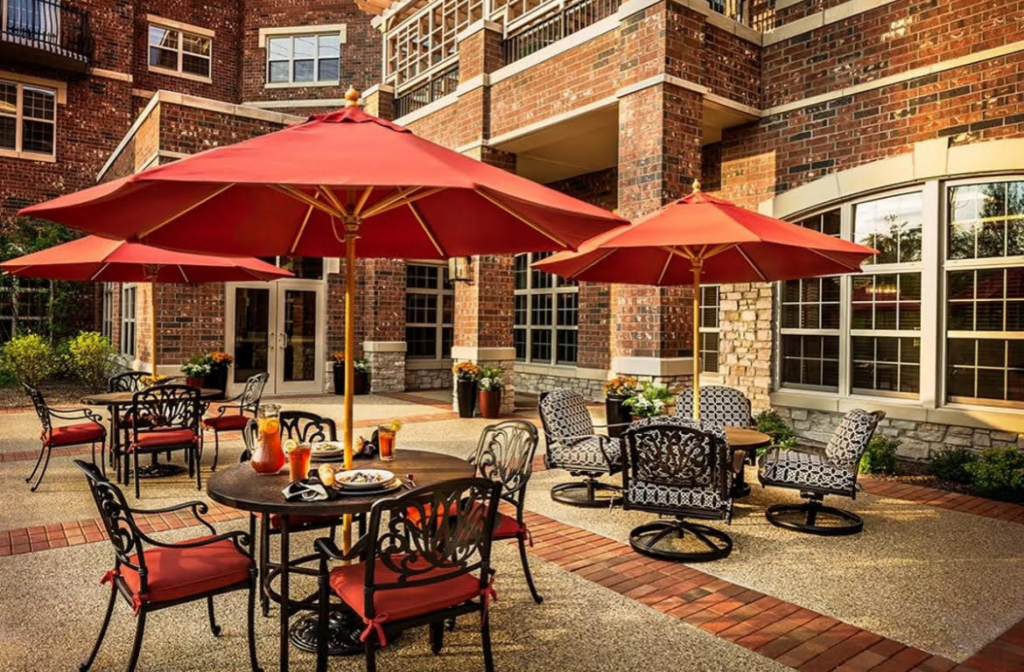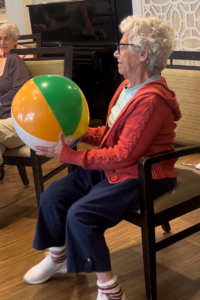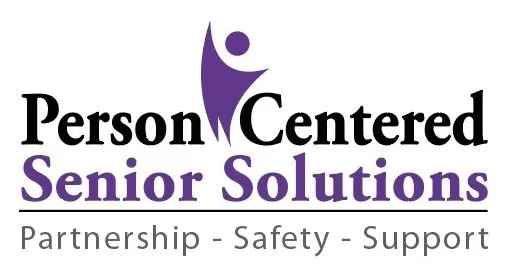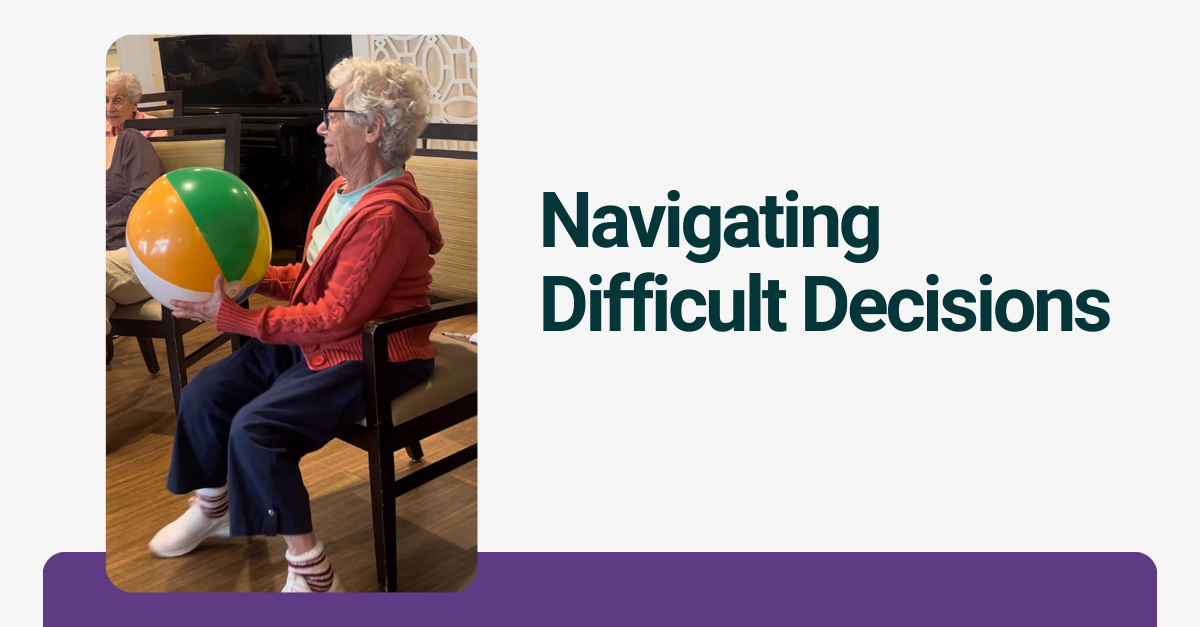Moving My Mom to a New Memory Care Community – Again

So, here’s where we are now. All of us siblings agree that moving my mom back to a memory care community is the best next step. There have been many discussions about which one would be best for her. We’re fortunate to live in an area with numerous options, but having so many choices led to differing opinions about which community would be the best fit.
I have extensive knowledge of memory care communities in the area. I have worked within a few and as a care manager, I pretty much have toured the majority of communities in the area with client families to find the best home for their loved ones. Also, in my past role as corporate director of memory care, I traveled across the country auditing their communities. So, It is safe to say that I have a keen sense of what to look for when visiting a community for quality. Yet, all this experience didn’t matter when it came to my own mom because I wasn’t the only one making the decision. I shared my thoughts, but stepped back and let others play an active role in making the decision.
 After touring several options, the family chose a community that offered open visitation, one-on-one companionship from staff throughout the day, and a strong care team. Although I had another community in mind, I let my siblings make the final decision because, truthfully, there is no “perfect” place. Every community has its pros and cons. What truly makes a move successful is open, clear, and honest communication with an interdisciplinary team of people dedicated to ensuring a smooth transition and successful move.
After touring several options, the family chose a community that offered open visitation, one-on-one companionship from staff throughout the day, and a strong care team. Although I had another community in mind, I let my siblings make the final decision because, truthfully, there is no “perfect” place. Every community has its pros and cons. What truly makes a move successful is open, clear, and honest communication with an interdisciplinary team of people dedicated to ensuring a smooth transition and successful move.
Once a decision was made and a move-in date set, my brother returned home to help prepare my mom for the transition. He stayed with her and the caregiver in the home for the days leading up to the move and during that time she became attached to him so much that it worried me how she would respond. Picking up my mom from her house to take her to the community was probably one of the toughest moments of my life. It was emotional and filled with feelings of guilt, sadness, and betrayal. Because of her stage of dementia, I couldn’t give her any warning or explain what was happening until the moment we got in the car, as she wouldn’t have understood. As soon as she got in the car, she realized what was happening. She was scared, sad, and in emotional pain.
This video captures that moment, and I warn you, it’s tough to watch. But it’s important to know that it was just a moment in time, and she is doing much better now.
Once we arrived at the community, there was a warm feeling of comfort and welcome. The staff made my mom feel at home, and although she didn’t fully understand what was happening, she was pleasantly optimistic. I spent time explaining to her that this was her new home, and she gradually began to take it all in. She was willing to participate in the group activities as long as I stayed close by. At that moment, I felt a sense of relief. However, I’m realistic in knowing that this “easy transition” may not last as my mom begins to realize she isn’t going back home.
My Advice
Top Tips for Choosing a Memory Care Community:
Selecting the right memory care community for a loved one with dementia or Alzheimer’s is a crucial decision that requires careful consideration. As a gerontologist, here are key tips to help guide you through the process:
- Evaluate Staff Expertise and Training
- Ensure that the staff members are specifically trained in dementia care and have ongoing education in managing cognitive impairments. Knowledge of the latest care techniques and understanding the emotional and psychological needs of residents are essential.
- Consider the Community’s Philosophy of Care
- Look for a community that emphasizes person-centered care, focusing on the unique needs, preferences, and histories of each resident. The care philosophy should align with your values and expectations for your loved one’s care.
- Observe the Interaction Between Staff and Residents
- During your visit, pay attention to how staff members interact with residents. Are they patient, compassionate, and respectful? Positive, warm interactions are indicators of a supportive environment where your loved one will feel valued and cared for.
- Assess the Environment
- The physical environment should be safe, comfortable, and designed to accommodate the needs of individuals with memory loss. Look for features like secure outdoor areas, clear signage, and a layout that minimizes confusion. A calming, homelike atmosphere can greatly enhance your loved one’s well-being.
- Inquire About the Staff-to-Resident Ratio
- A lower staff-to-resident ratio generally means more personalized attention and better care. Make sure there are enough staff members to provide the necessary support, especially during peak times like meals and activities.
- Understand the Community’s Approach to Health Care and Medication Management
- Ask how the community manages healthcare needs and medications. It’s important that they have a clear plan for regular health assessments, medication administration, and access to medical professionals. Ensure they can handle your loved one’s specific health conditions.
- Examine the Activities and Social Engagement Opportunities
- Meaningful activities that are tailored to the cognitive abilities of residents are crucial for maintaining quality of life. The community should offer a variety of activities that promote physical, emotional, and mental engagement, including options for socialization and individual hobbies.
- Review the Longevity and Stability of the Staff
- Staff turnover can impact the quality of care. Communities with long-tenured staff members tend to have a more consistent and experienced care team. Ask about staff retention rates and how the community supports and values its employees.
- Check the Communication Plan
- Clear, ongoing communication between the community and the family is essential. Ask how the community keeps families informed about their loved one’s well-being, any changes in care, and how they handle emergencies or concerns.
- Evaluate the Transition and Integration Plan
- A well-thought-out transition plan is important for helping your loved one adjust to their new home. The community should have a strategy in place to ease the move, including steps to reduce anxiety and ensure a smooth integration into daily life.
- Consider the Community’s Track Record and Reputation
- Research the community’s reputation by reading reviews, talking to other families, and checking their history of care. A community with a strong reputation for quality care and satisfied families is more likely to provide the best environment for your loved one.
- Visit Multiple Communities
- It’s essential to visit several communities to compare their offerings and get a feel for the environment. Trust your instincts during these visits—how you feel about a place is just as important as the facts and figures.
- Ask About the Costs and Financial Options
- Understand the full cost of care, including any additional fees for specific services. Inquire about payment options, financial assistance programs, and what is included in the monthly fee. It’s important to choose a community that fits within your financial plans while still offering quality care.

